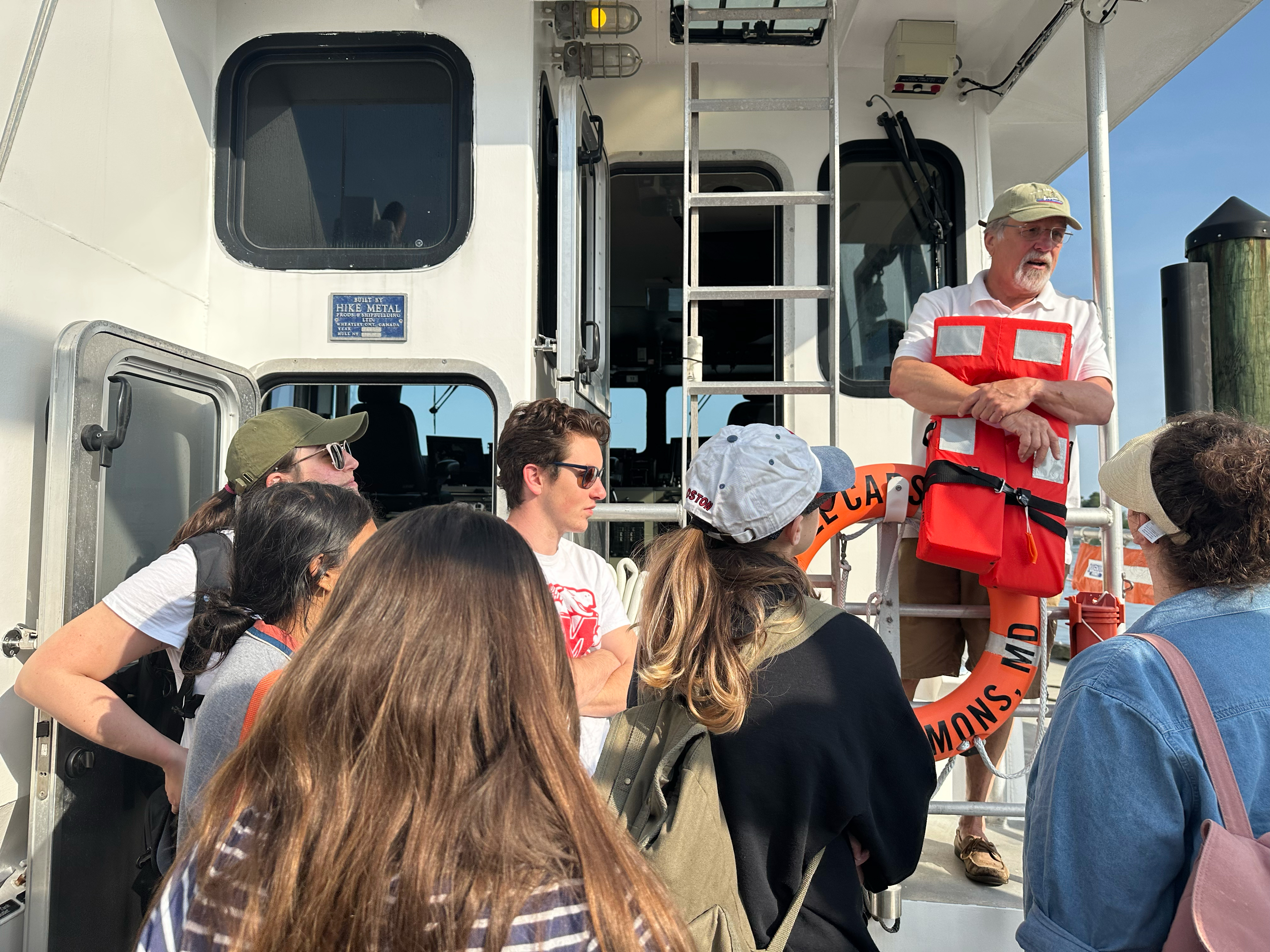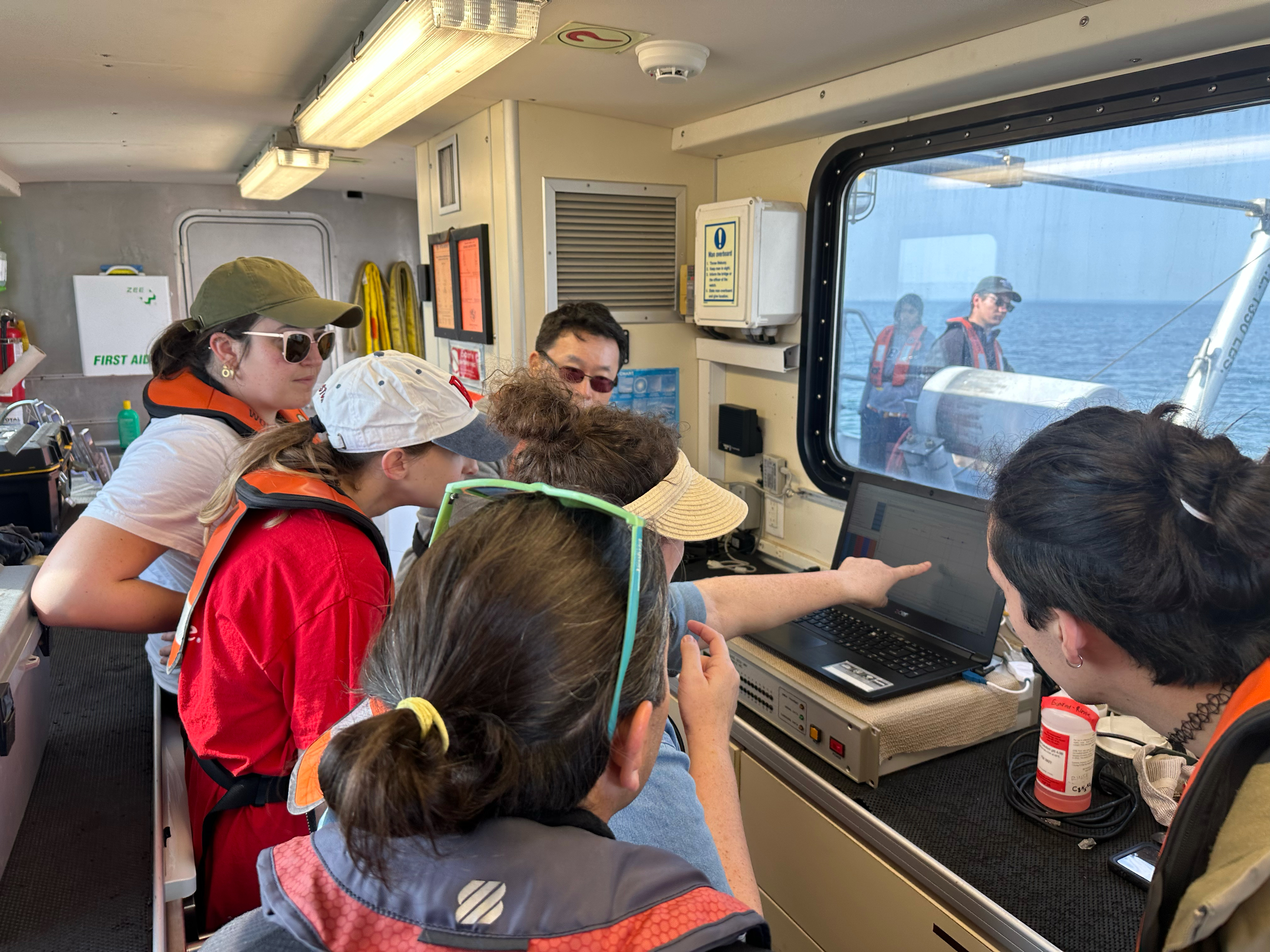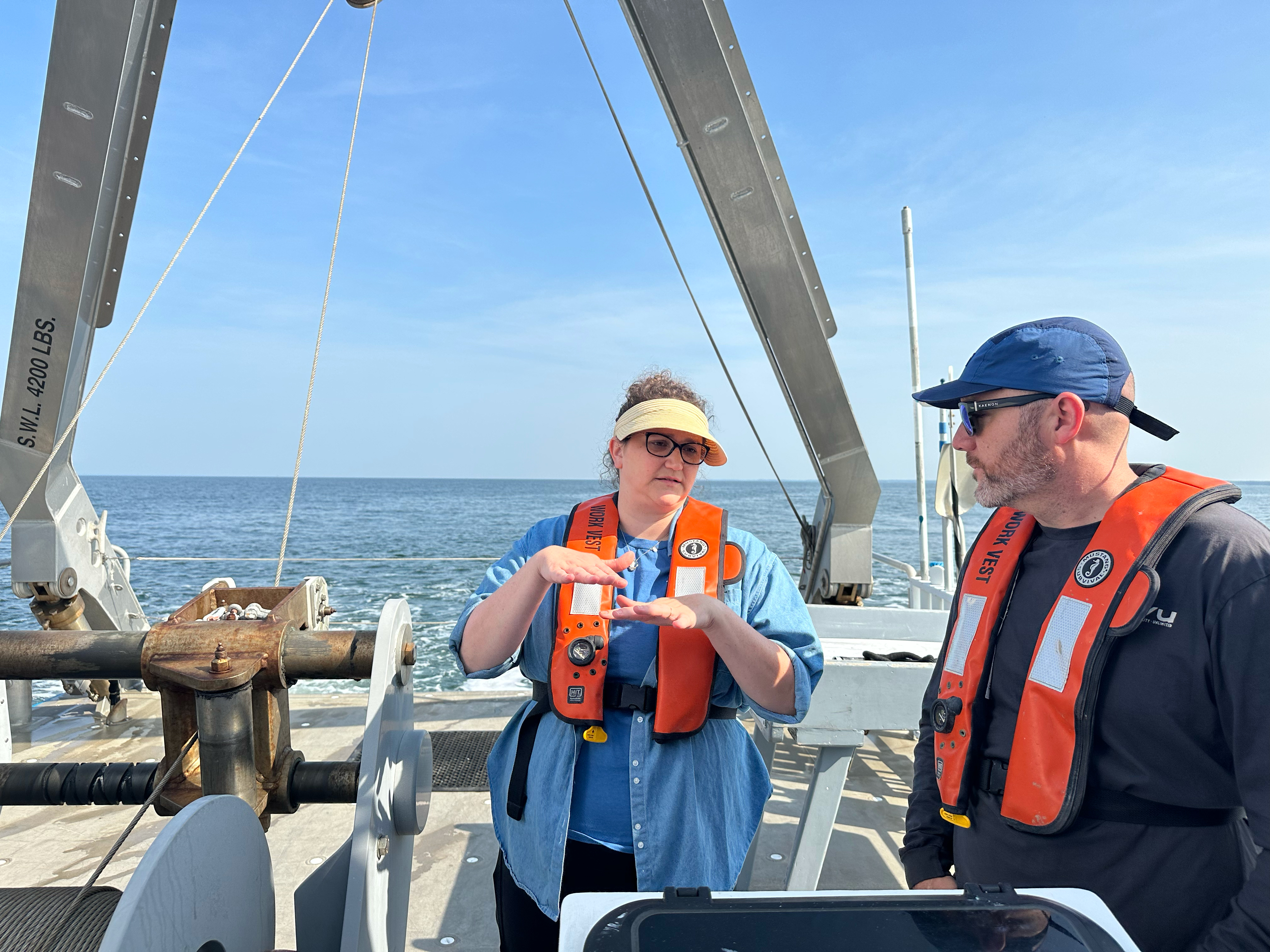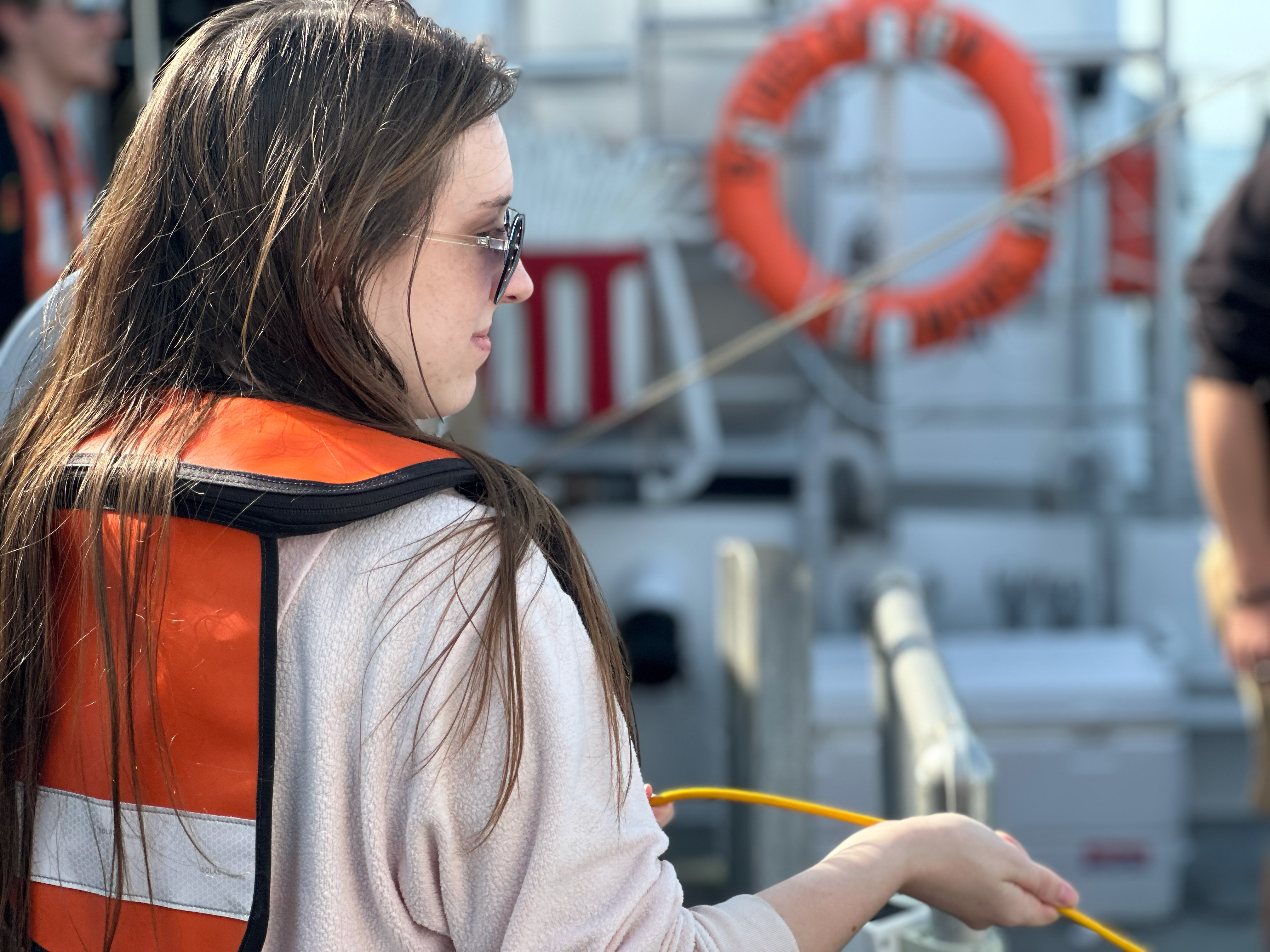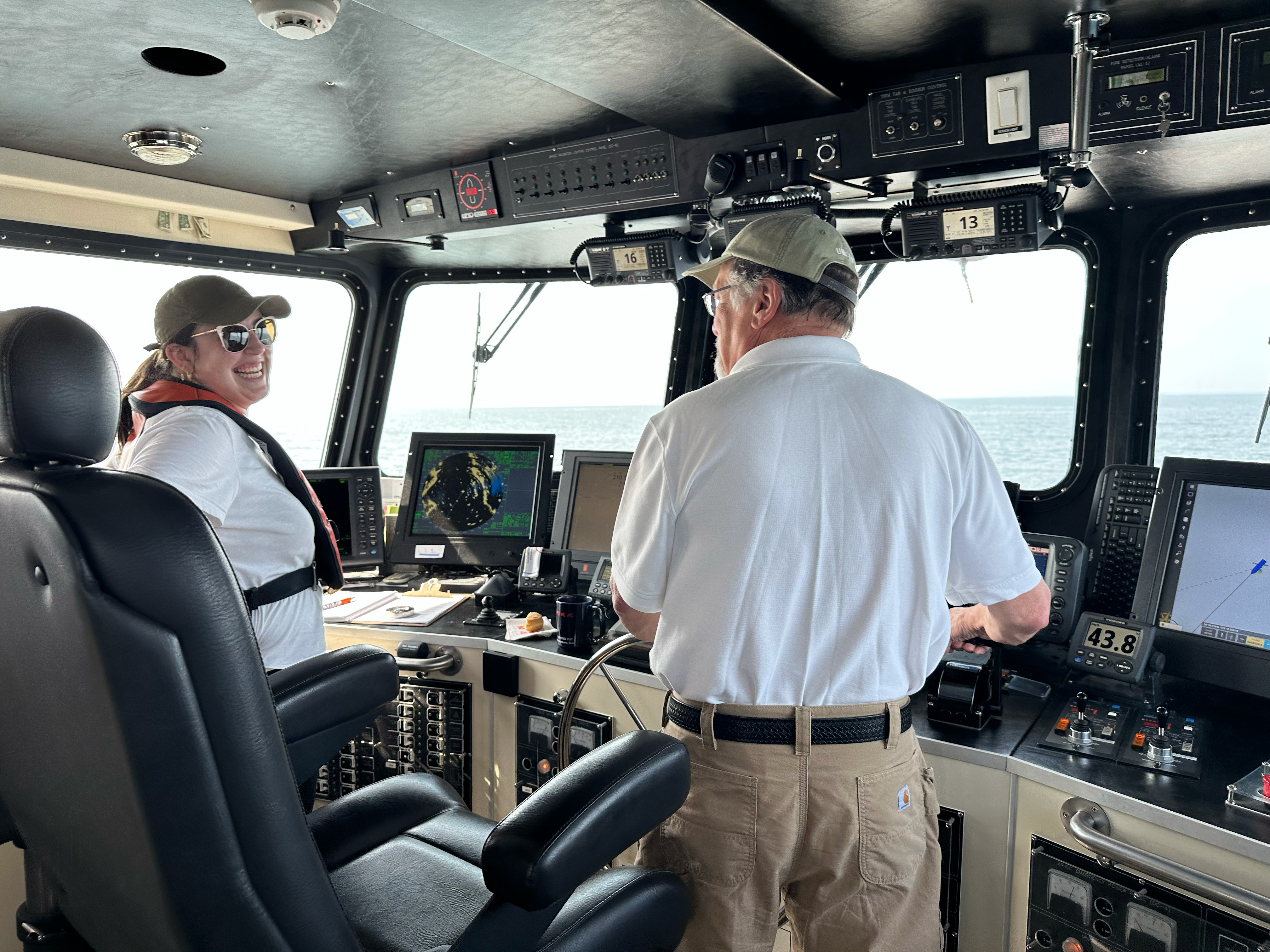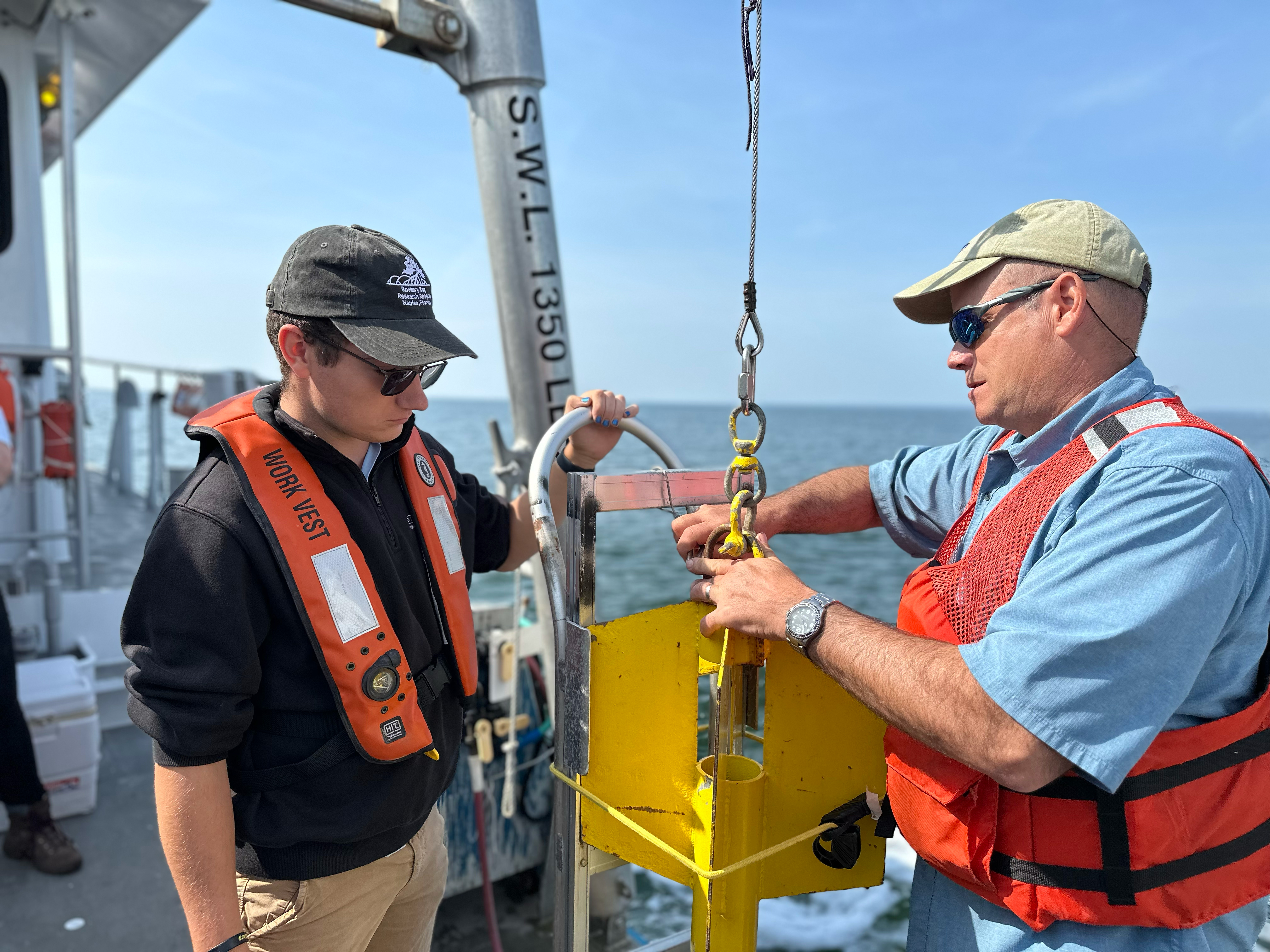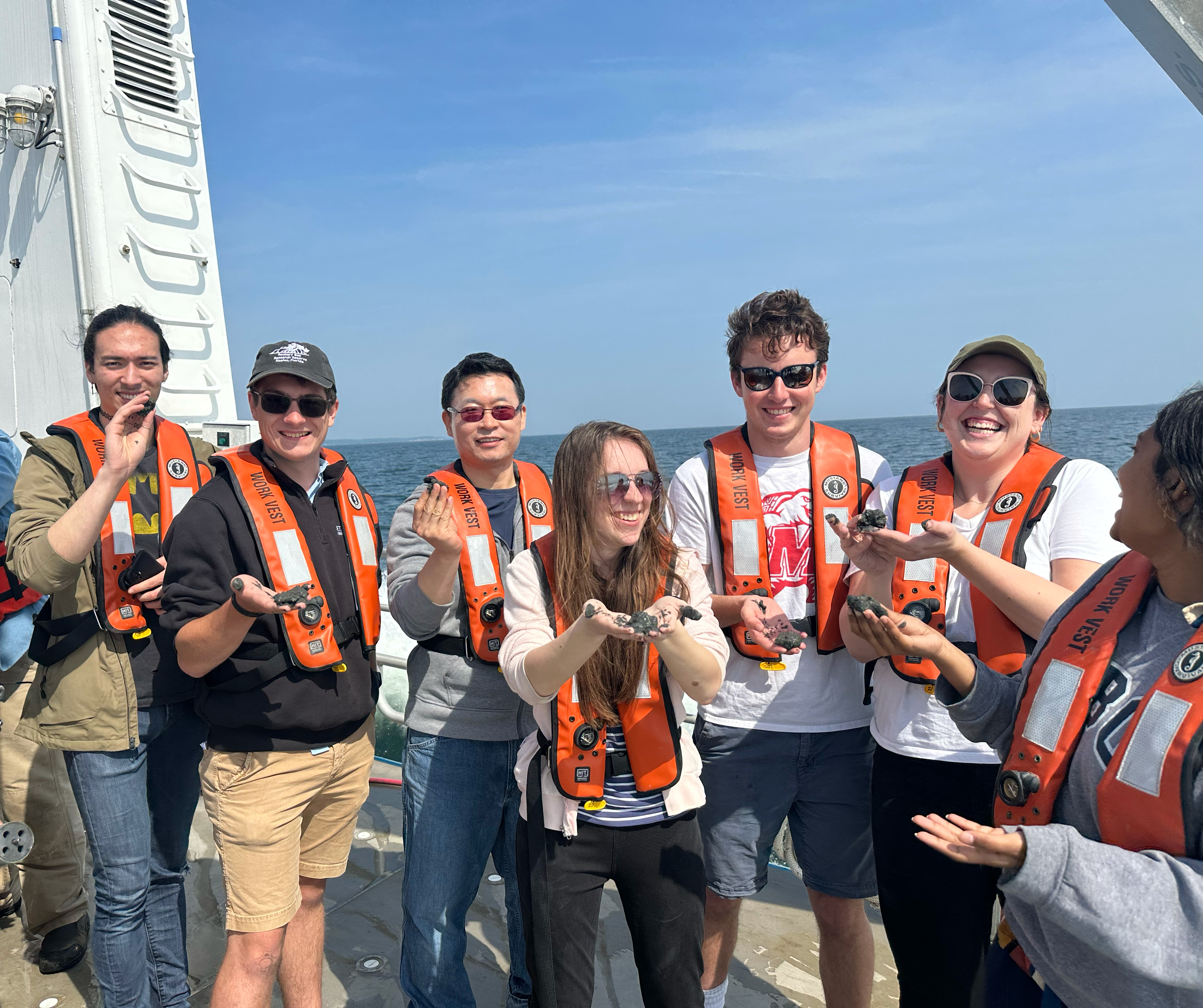Cruising the Chesapeake Bay
Atmospheric and oceanic science course offers UMD students experiential learning opportunity
University of Maryland undergraduate students culminated a semester studying the oceanography of the Chesapeake Bay aboard a research cruise off of Solomons Island.
In its second year taught by Atmospheric and Oceanic Science Assistant Professor Jacob Wenegrat, AOSC421: Oceanography of the Chesapeake and Mid-Atlantic focuses on the impact of ocean circulation on the coastal and estuarine environment—and the future of the east coast in a changing climate.
“Measuring oceanographic data has traditionally been a challenge. Compared with atmospheric data, for example, it’s sparse,” Wenegrat said. “Part of the purpose of this cruise is practical. We look at what the models predicted today would look like and compare those models with the levels we’re seeing.”
Aboard the University of Maryland Center for Environmental Science’s (UMCES) R/V Rachel Carson, undergraduates worked together with UMCES researchers to deploy a CTD Rosette at five predetermined stations. The CTD Rosette is a frame containing dozens of canisters that collect water samples, including an instrument that measures the basic physical properties of the ocean such as the electrical conductivity, temperature and pressure of the water.
“It’s a refreshing experience getting off campus, being out on the water—even getting to touch some funky mud from the bay floor,” said junior physics and secondary education double major Thomas Hearty. “I’ve done many types of research so far in college, and this is hands-down one of my favorite experiences.”
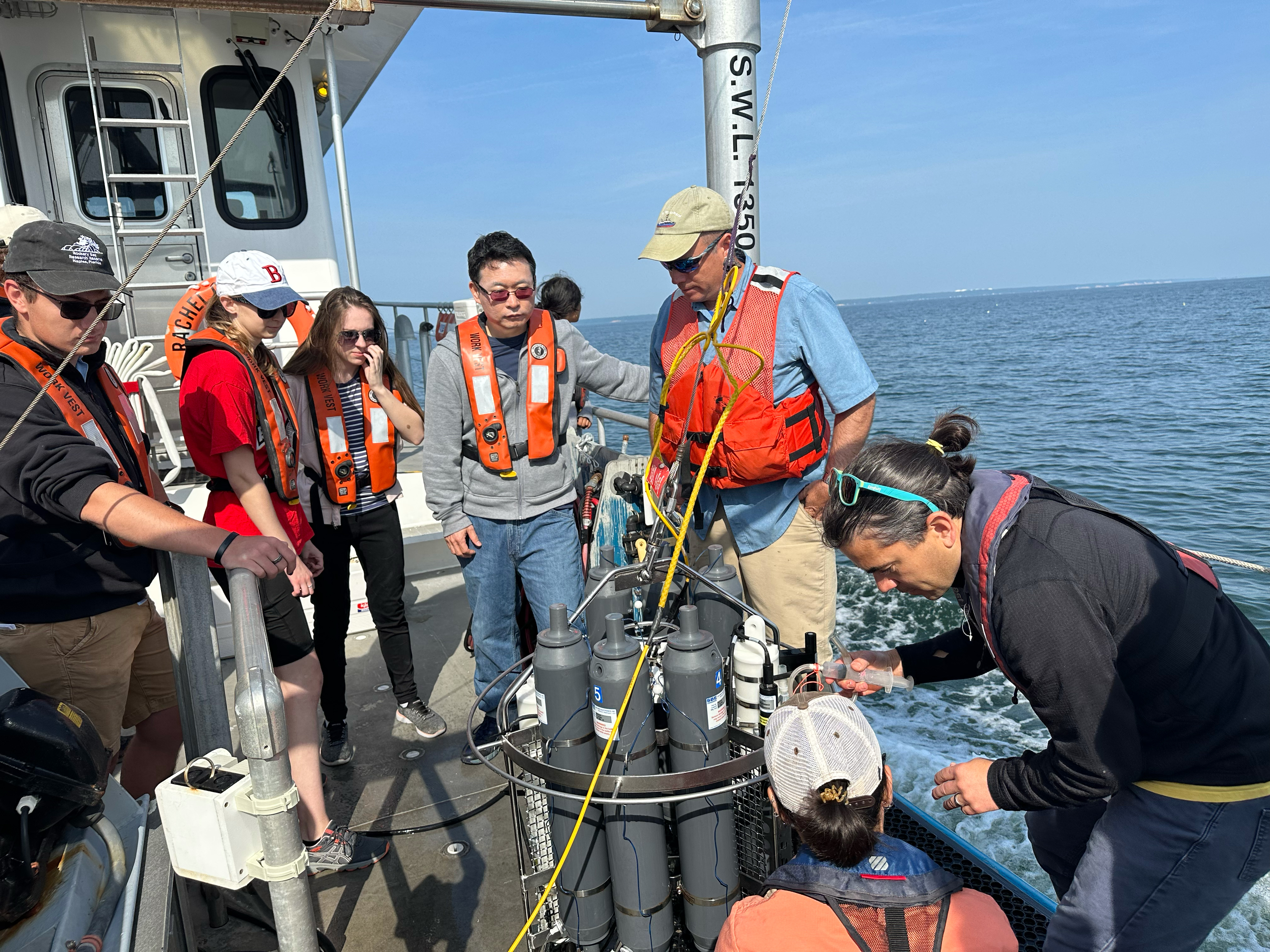
With guidance from UMCES Chesapeake Biological Laboratory Associate Professor Jeremy Testa, students deployed the CTD instrument into the water at one of the test sites.
“The CTD is really the workhorse of most oceanographic research,” Testa said. “It gives us a basic understanding of what the water looks like.”
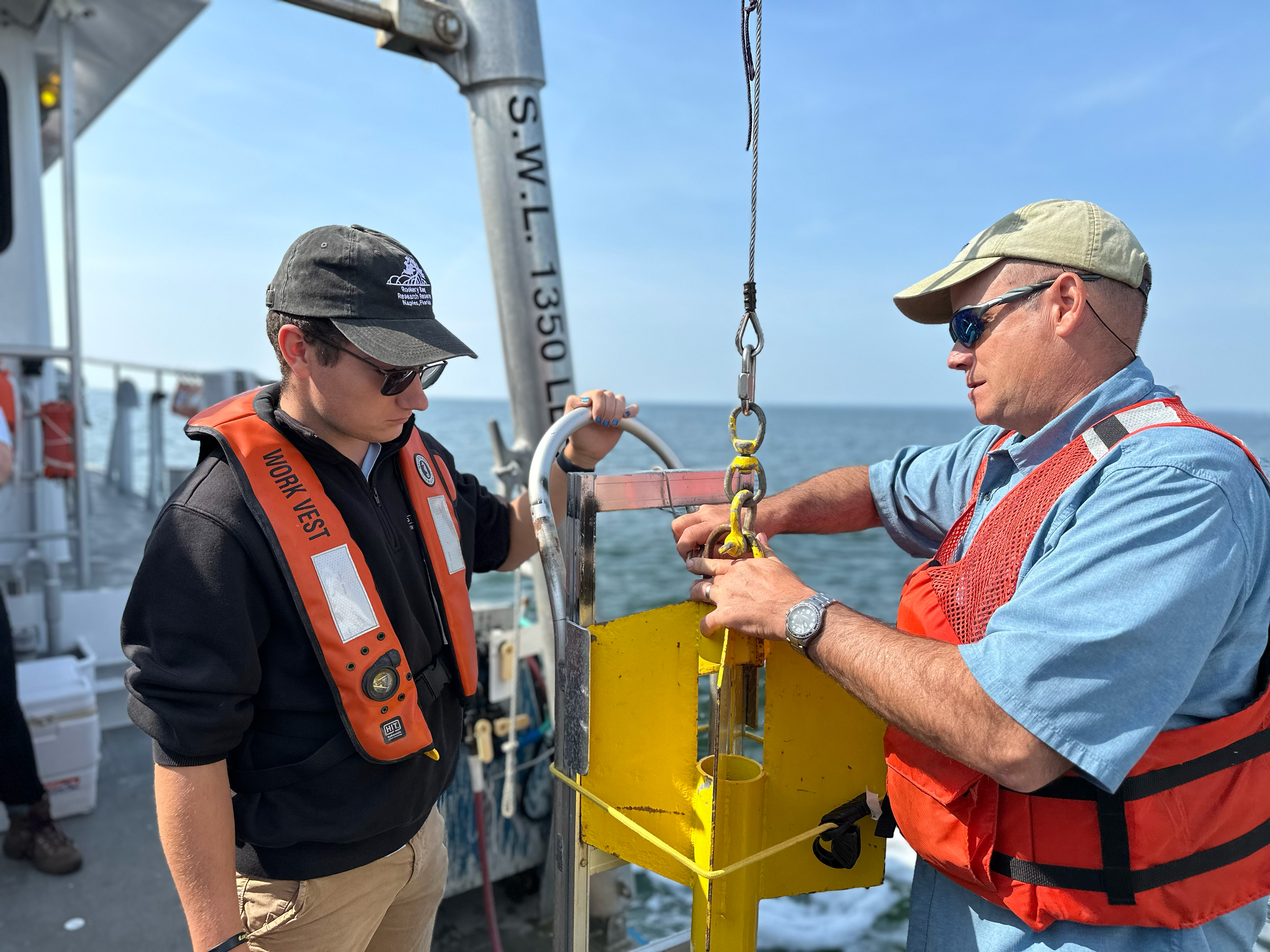
Jonah Pereyra, a senior atmospheric and oceanic science and environmental science and policy dual-degree student and recipient of a 2022 NOAA Hollings Scholarship, worked with Mate Andy Samworth to prepare to deploy a gravity core.
The gravity core plunges through the water deep into the bay floor to collect layers of sediment, used to create a sediment chemistry profile.
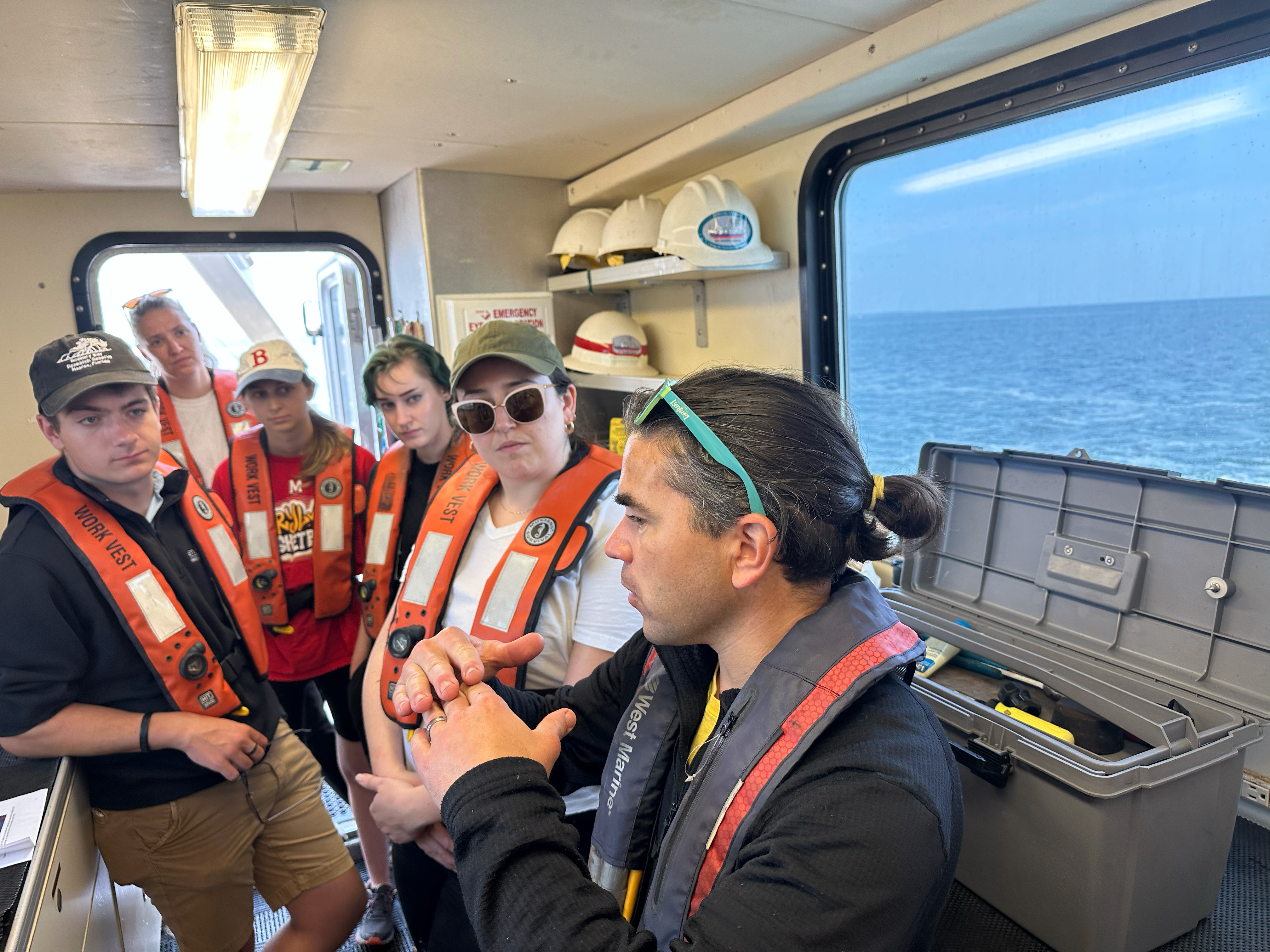
Testa explained the layers of salinity at the different testing stations on the research cruise.
“In the wet lab, we saw that the measurements coming in from the CTD were actually pretty different from what the models predicted,” Wenegrat said. “This is why continuing to collect this kind of data is important, to help us refine these models for future forecasting.”
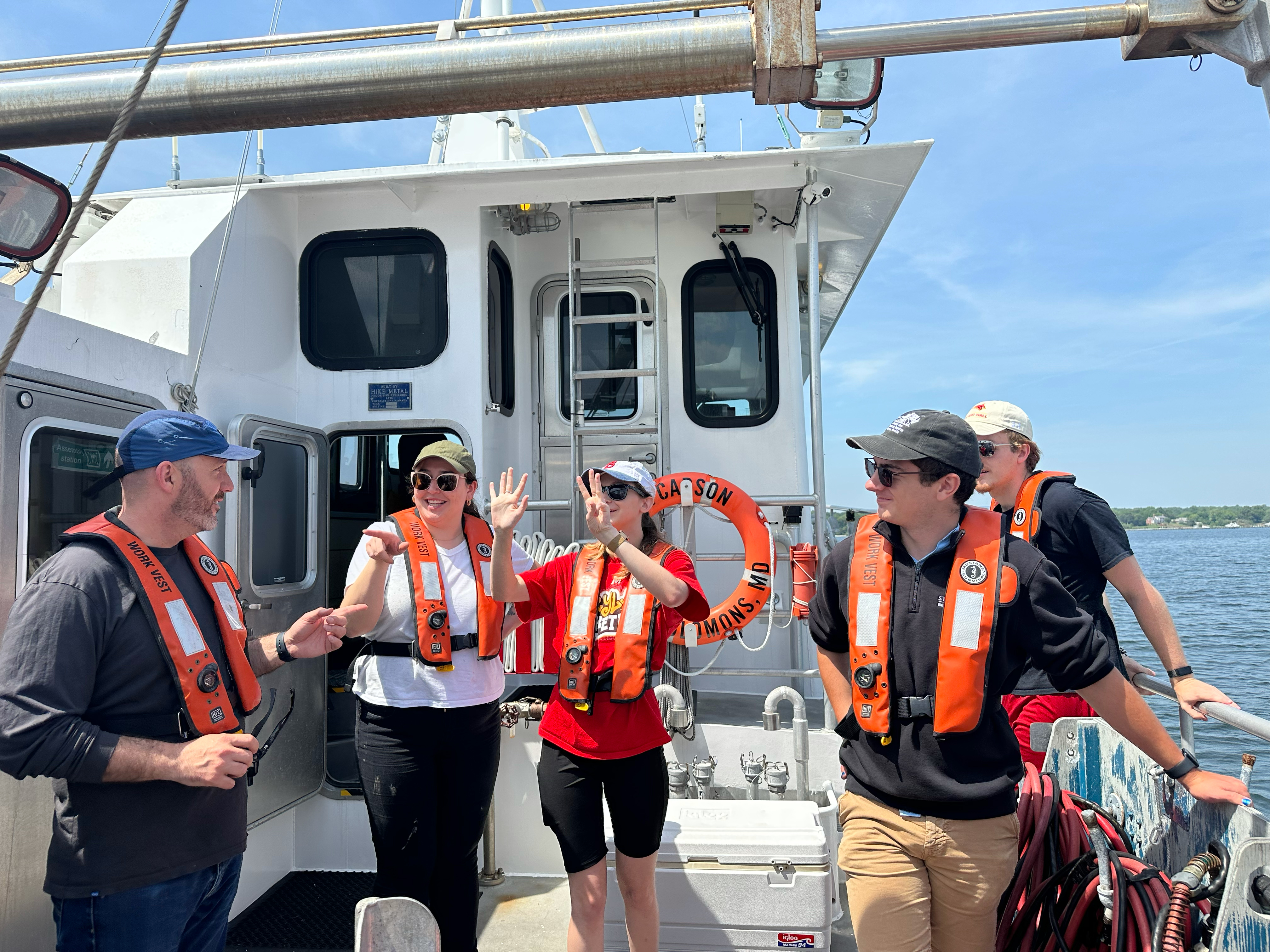
Students guessed the salinity level of the water closer to the mouth of the Patuxent River before collecting data from the site. Surprisingly, the salinity level closer to the mouth of the Patuxent River was higher than the level out further out in the Bay.
“This is probably because of the flow of fresh water coming down from the Susquehanna River, which is the main water source for the Bay,” explained Testa.
All of the data collected during this cruise will be incorporated in Testa’s long-term coastal marine ecology study of the Chesapeake Bay and will be used for student data analysis projects in Wenegrat’s class.
“It’s pretty cool to see all the knowledge we learned this semester applied in real life,” said senior atmospheric and oceanic science major Megan Brown, who conducts research in Wenegrat’s lab. “This kind of field experience really gets you ready for the job.”



